The picturesque city of Stockholm is made up of 14 islands that are situated on the banks of the channel between Lake Malaren and the Baltic Sea. With its clear waters, multiple bridges, and waterways, Stockholm truly lives up to its monicker ‘Venice of the North’. This green city on blue waters was by far the prettiest city we visited during our tour of the Baltic states and Scandinavia. We were amazed by how different the city felt and looked just by taking a short walk and crossing a bridge onto the adjoining islands. Within a span of walking a few minutes, we could have been in the medieval cobblestone alleys of Gamla Stan, window shopping in the trendy district of Sodermalm, strolling through the leafy green parks of Djurgarden, or soaking in the bustling energy of the city center on Norrmalm.
The city of Stockholm was founded by Birger Jarl in 1250, and his lineage continues to occupy the Swedish Royal throne to this day. From mid 17th to 18th centuries, Sweden was one of the most powerful kingdoms in Europe. At the peak of its powers, the Swedish kingdom encompassed modern day Norway, Finland, the Baltic states, and parts of Northern Germany. We were given a peek into the treasures accumulated during that time while visiting the Royal Palace and Main Cathedral.
Today Stockholm is a modern metropolis that is famed for its Swedish design, creativity, and innovation that has given the world companies such Ericsson, H&M, Skype, and Spotify. Sweden was one of the first welfare states, and its citizens enjoy a high standard of living, with high importance given to work life balance. The Swedish sustainability mindset was probably most evident for us just by seeing the sheer number of bicyclists on the roads, almost outnumbering cars and pedestrians. Have you seen two-way bike lanes in any modern city??
Gamla Stan Old Town
The tiny island of Gamla Stan is the heart of Old Town in Stockholm. Walking around Gamla Stan is a photographer’s dream, with picture postcard views of pastel colored houses in narrow winding cobblestone alleys at every turn. This central island was our base from where we explored Old Town and the rest of Stockholm.
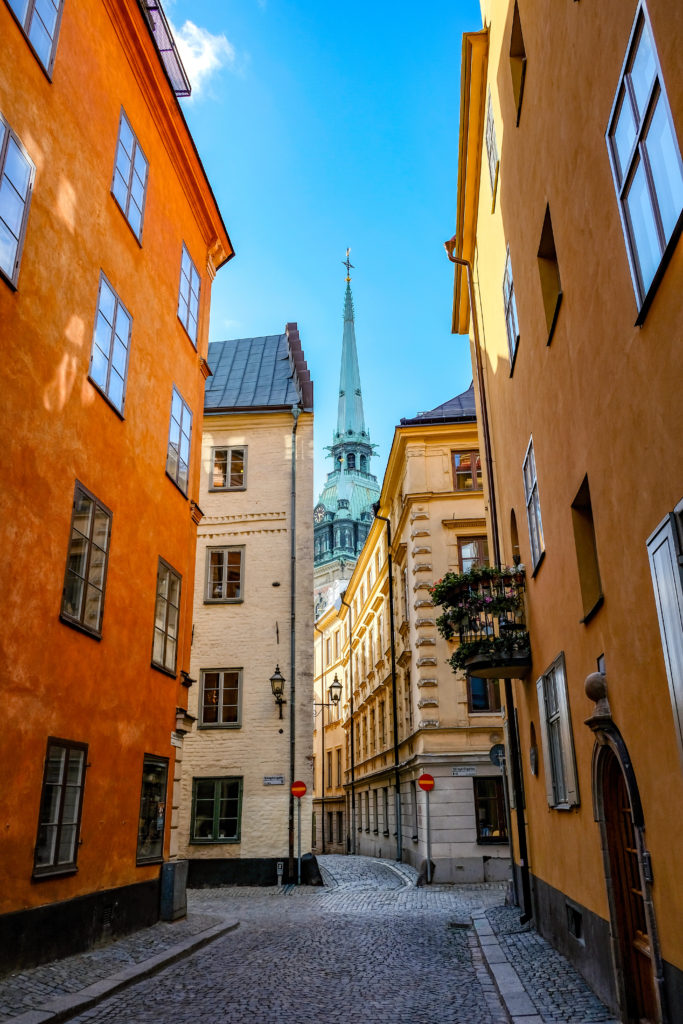
Colorful alleys in Gamla Stan
Stortorget: This was and still is the main city square of Gamla Stam, and is probably most famous for the extremely photogenic pastel colored medieval houses that flank the square. Today these 17th century buildings house some great restaurants and cafes. We found ourselves returning multiple times to Chokladdkoppen in the yellow house for their giant bowls of delicious hot chocolate.
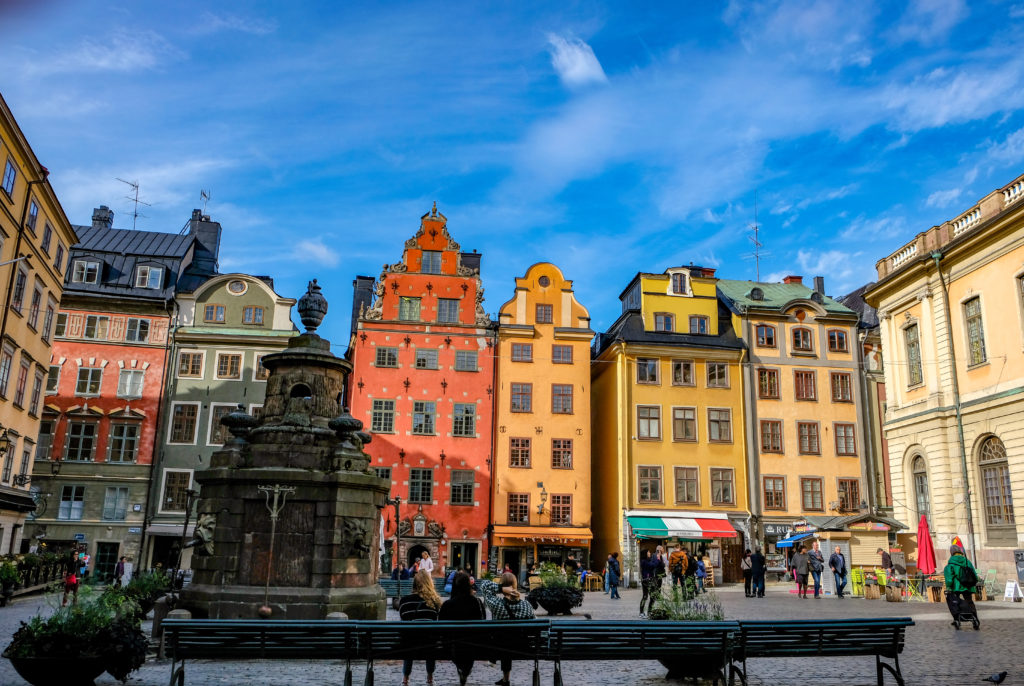
Stortorget’s pastel colored square
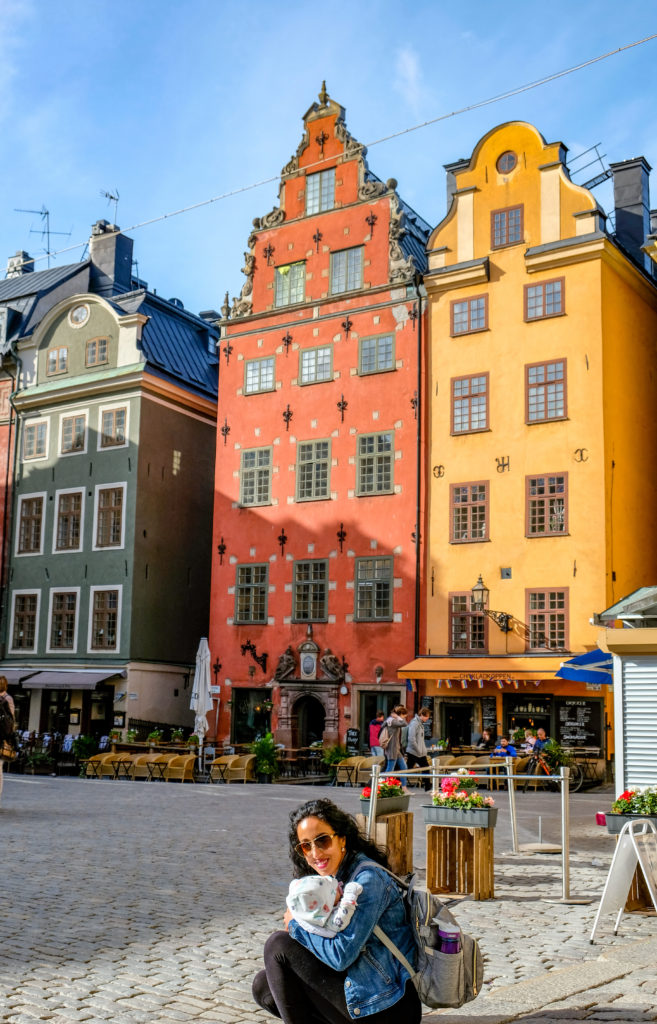
Soaking in some sunshine in the chilly morning
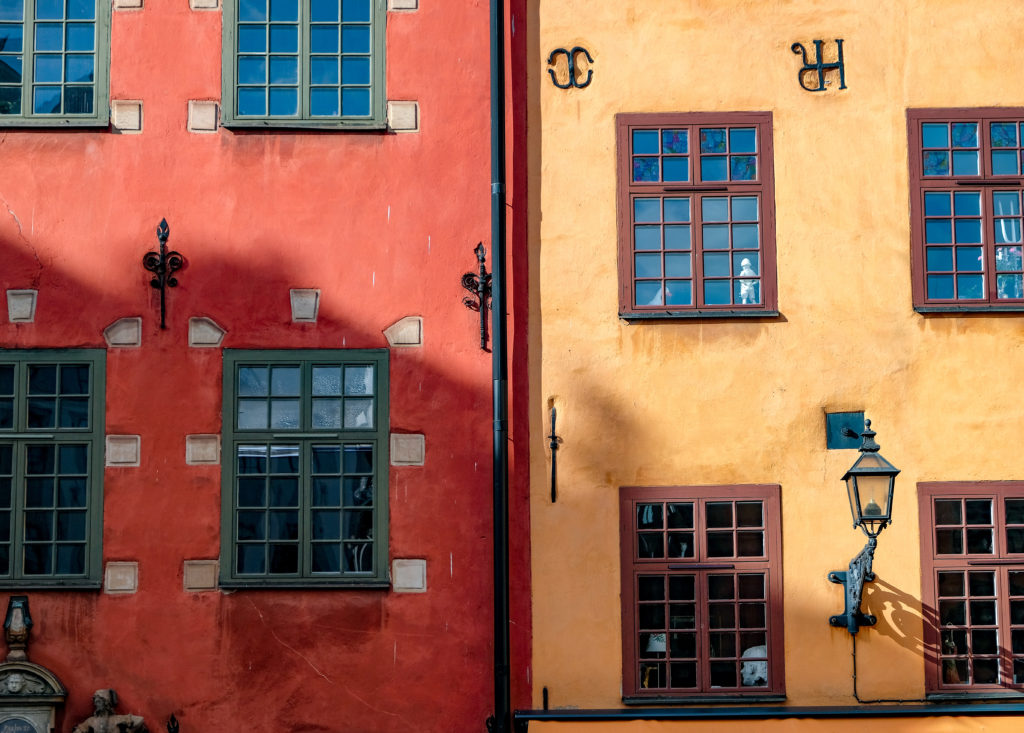
Close-up view of perhaps one of Stockholm’s most photographed buildings
Nobelmuseet: The Nobel Museum is a great primer into the life of Alfred Nobel – his achievements and subsequent contributions to the world via his namesake awards. The juxtaposition of someone who invented dynamite using his wealth and fame to hand out peace awards was interesting to learn. The museum also focuses on past and current Nobel laureates, with plenty of personal items that winners have donated to the museum on display.
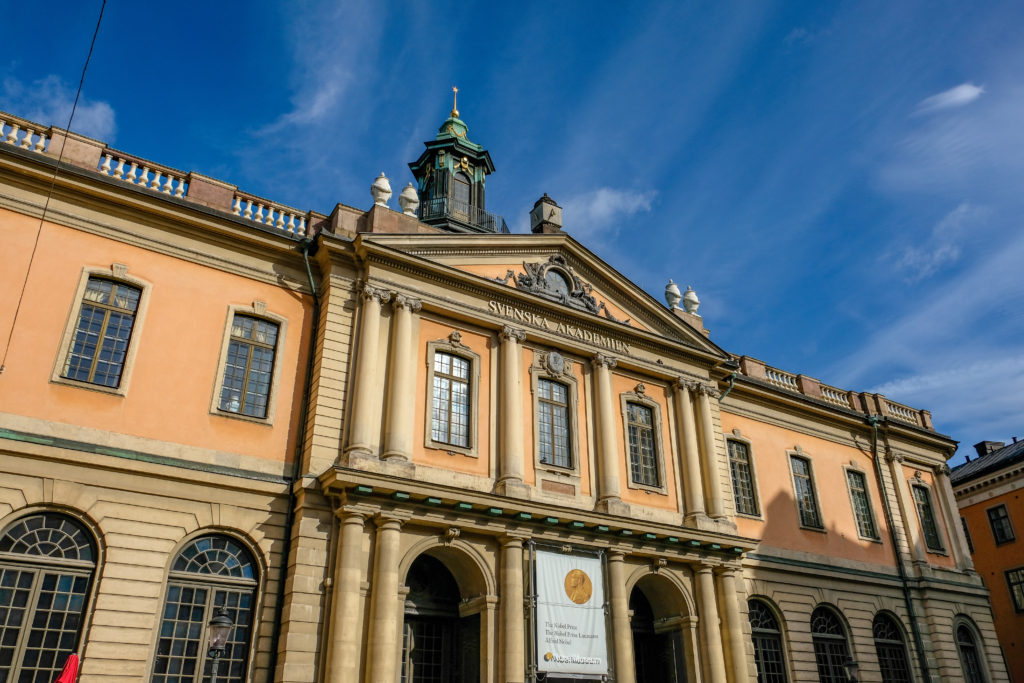
‘Nobelmuseet’ or Nobel Museum
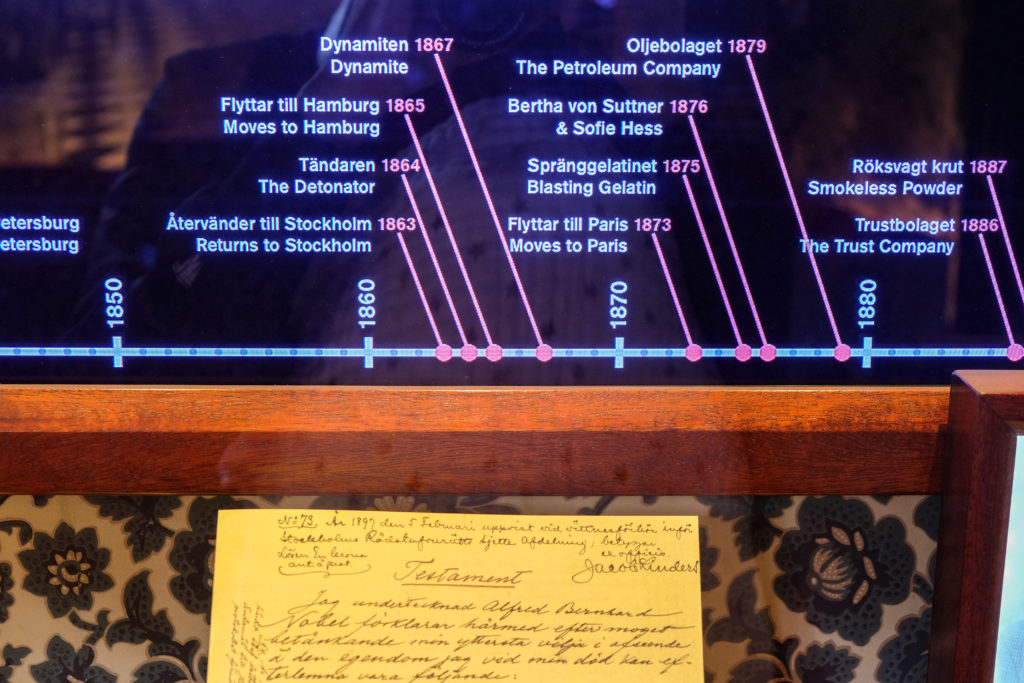
From inventing dynamite and other explosives, to becoming synonymous with a peace award
Storkyran: The Storkyrkan is Stockholm’s oldest church and main Cathedral. The Cathedral due to its location next to the Royal Palace is often used for coronations and royal weddings. The interior of Storkyrkan seemed ostentatious for a Lutheran church, with its silver altar and golden gilded ornaments and decorations, especially in comparison to the other more simplistic Scandinavian and Baltic Lutheran churches we had visited. Storkyrkan is most famous for a life-size wood carved sculpture of St George slaying the dragon, that occupies prime space next to the altar.
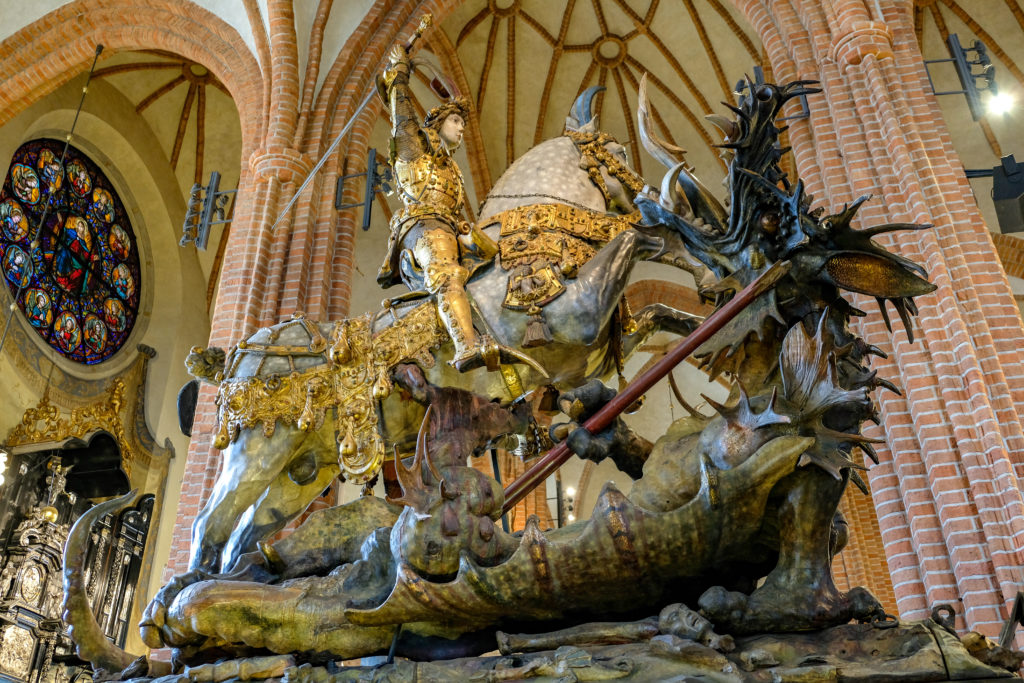
Sculpture of St George and the Dragon
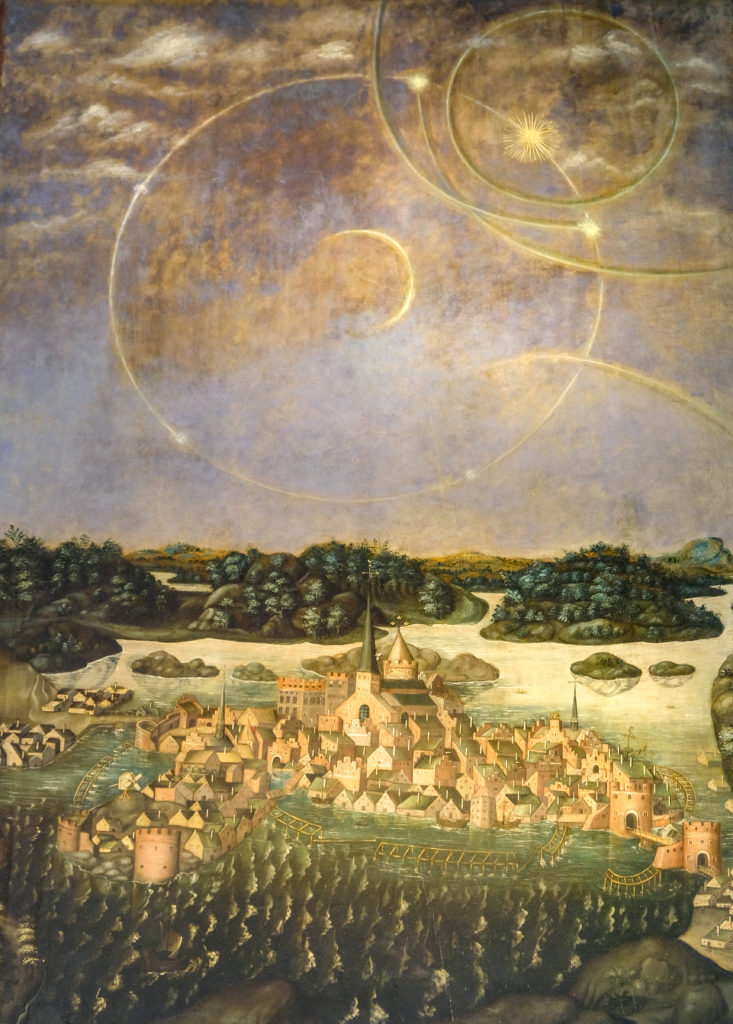
The Parhelion painting hanging in Storkyrkan, depicting a celestial phenomenon observed in Stockholm in 1535
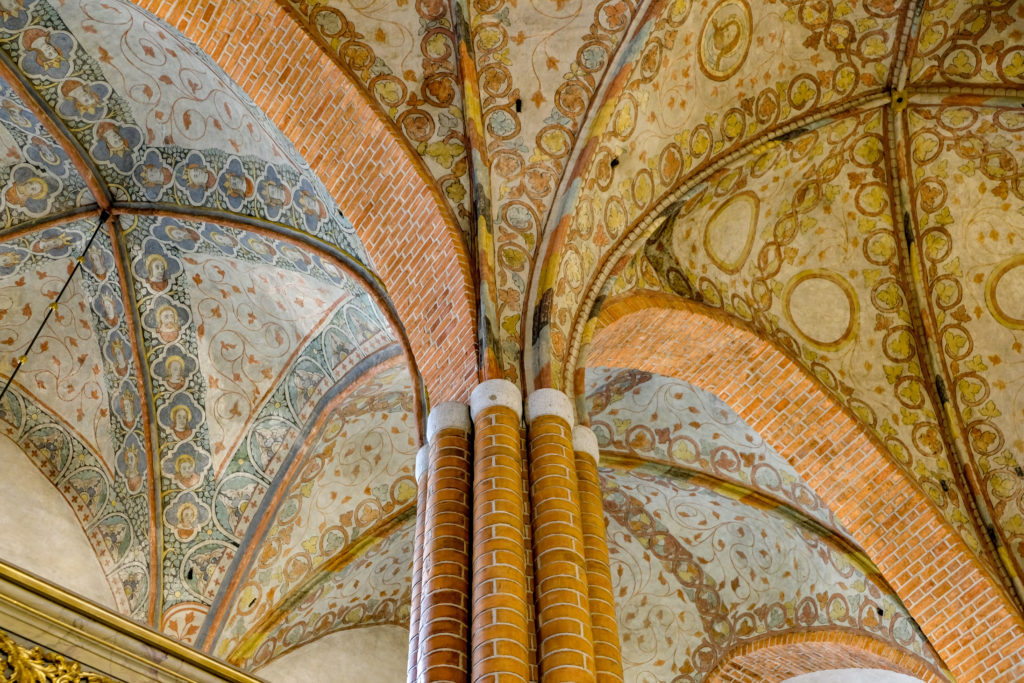
Detail on the decorated church ceilings
Royal Palace: The Kungliga Stottet or Royal Palace was conveniently located just a couple of minutes away from our AirBnB. We did the tours of the Royal Apartments, the Treasury, Tre Kronor Museum and Museum of Antiquities in an afternoon. For most of the tours we were awestruck by the pomp and splendor on display – with gilded decorations, extravagant paintings, frescoes, portraits, and sculptures all around.
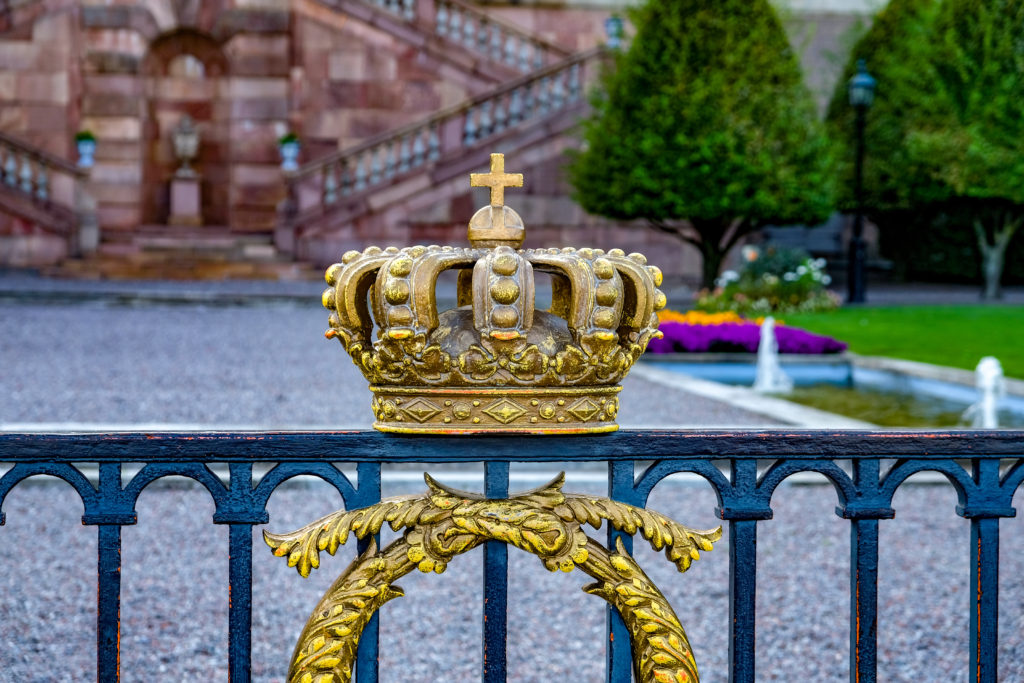
Crown insignia outside the Palace
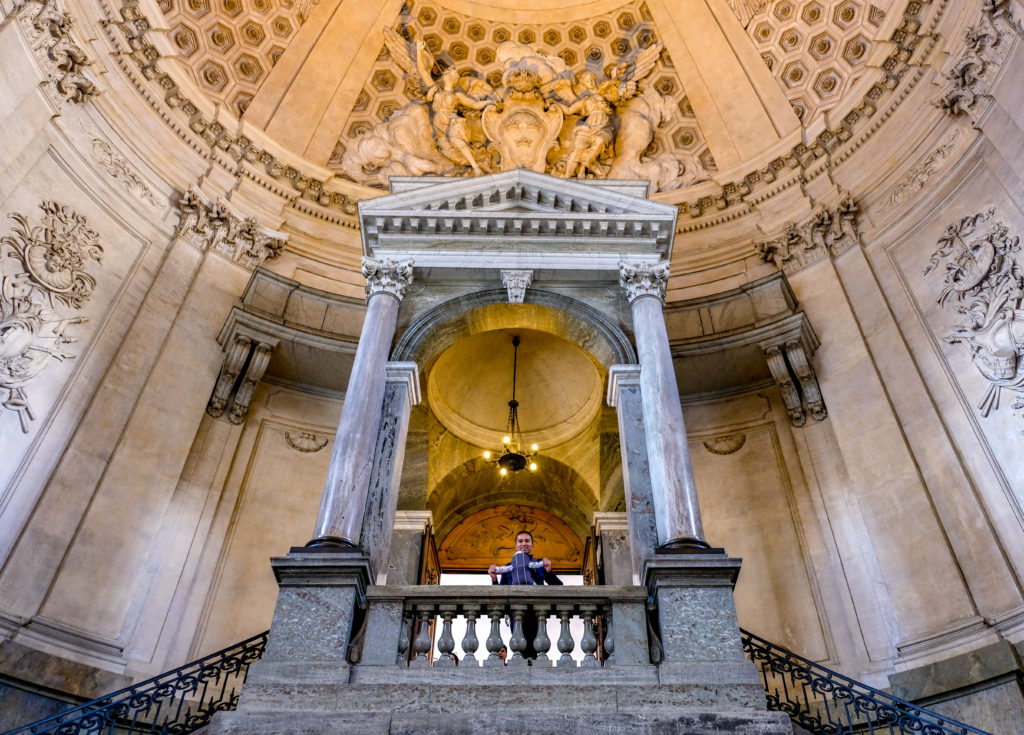
One of the massive domed entrances to the Palace
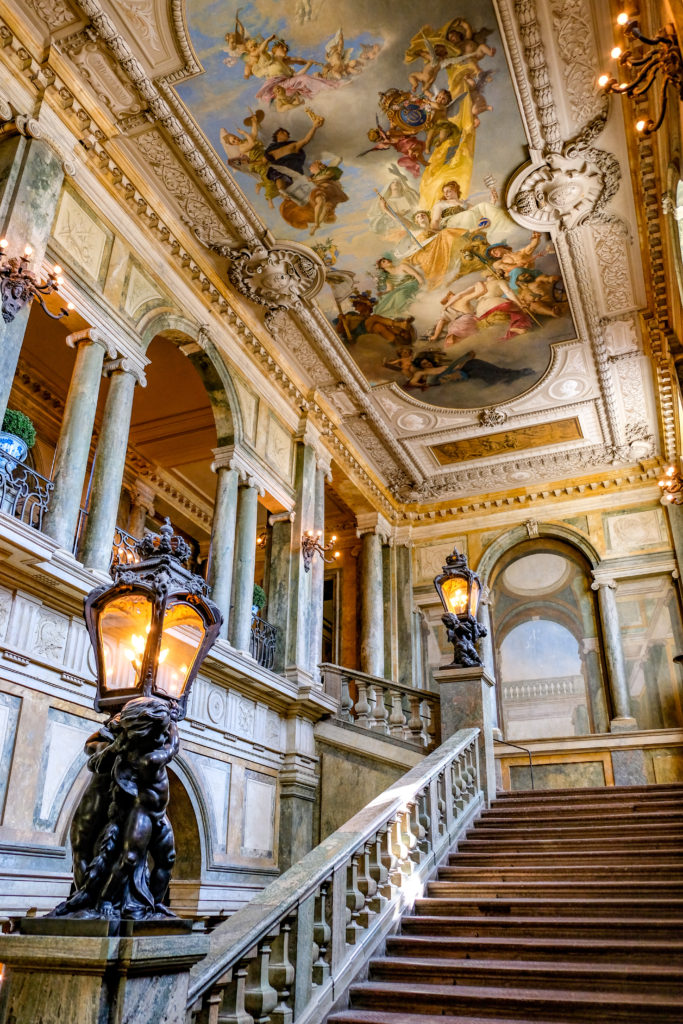
Magnificently decorated stairway to the Royal Apartments
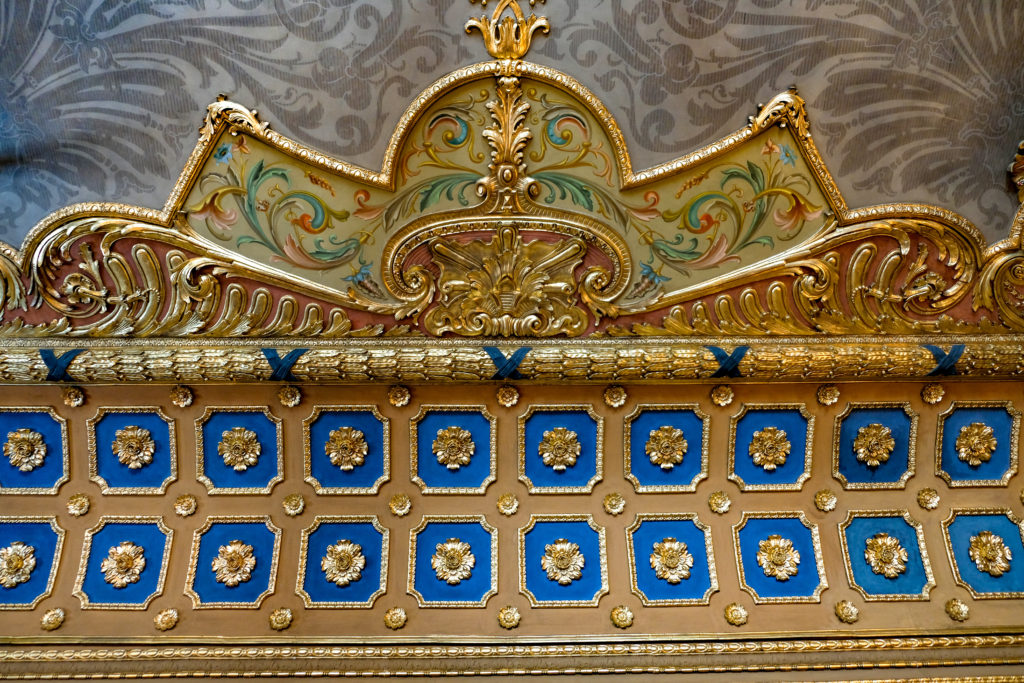
Intricate gilded crown molding
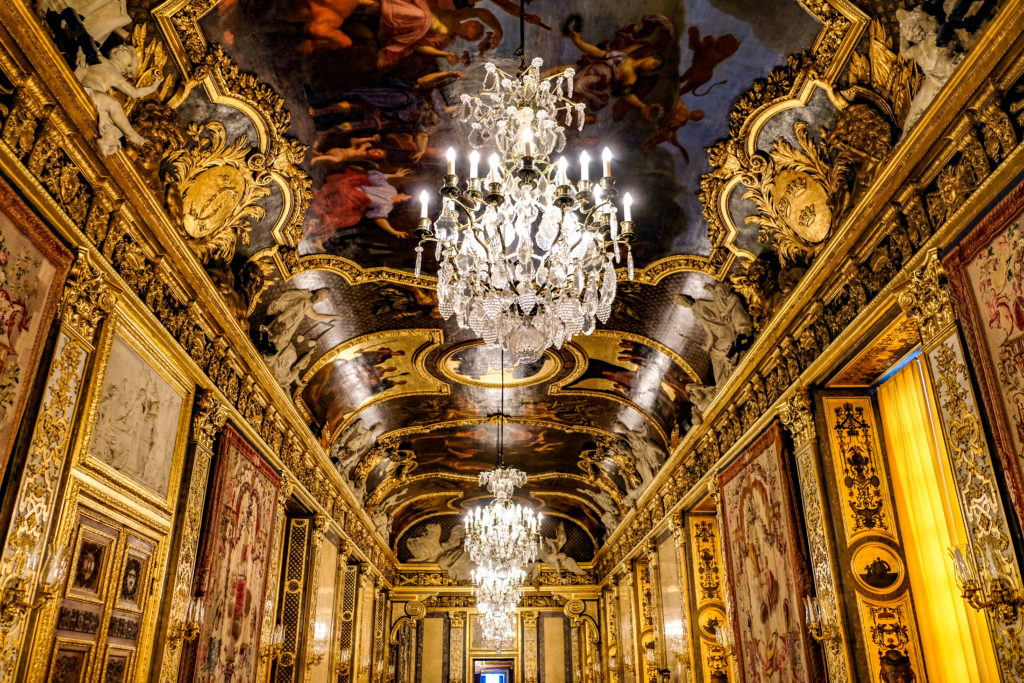
Gold much?
Changing of the royal guards: One of the most popular tourist activities in Stockholm is to watch the changing of the guard, which happens in the main courtyard of the Royal Palace around noon everyday. We didn’t get there ahead of time, but still managed to bustle our way to the front of the crowds to see the spectacle, which was accompanied by a full marching band.
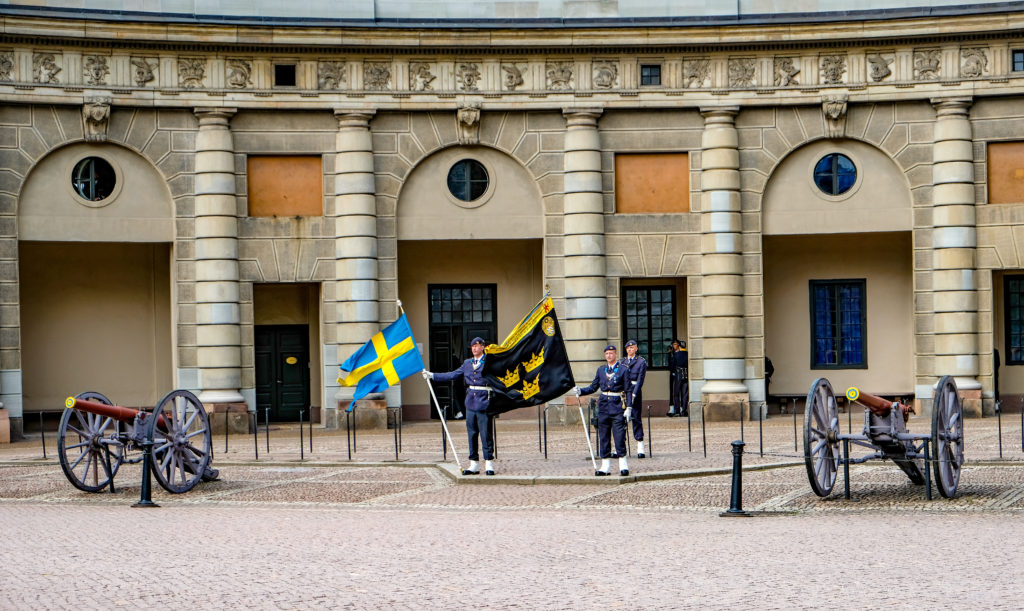
Royal guards prepping for the changeover
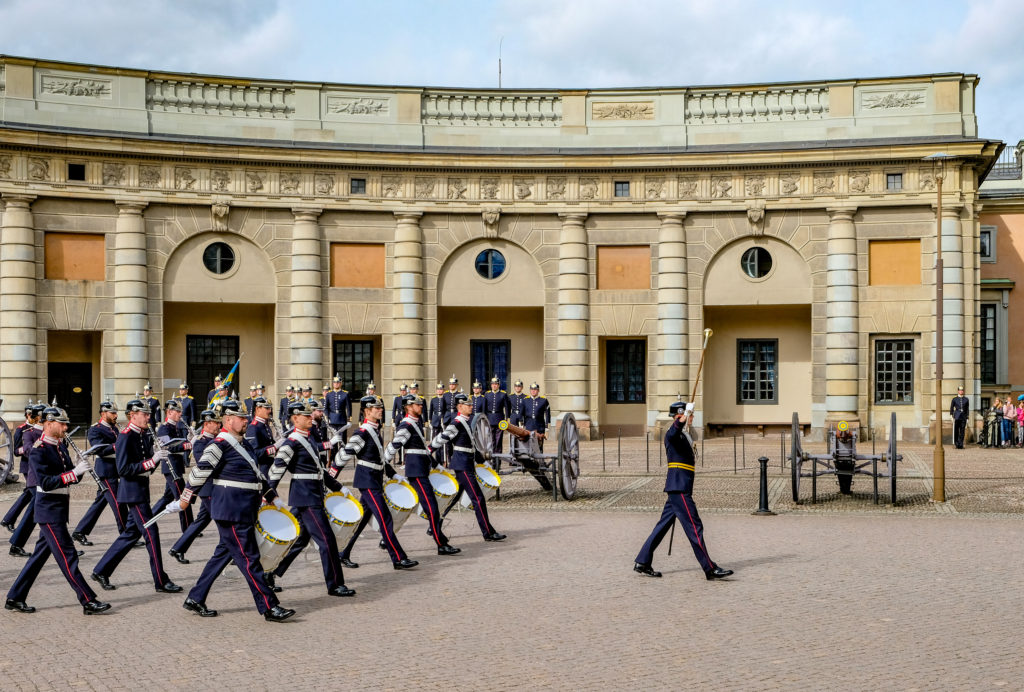
Changing of the guard with marching band
Stadhuset & Riddarholmskyrkan: From the western edge of Old Town, we walked in front of the Riddarholmskyrkan Royal burial church and statue of Stockholm founder Birger Jarl, then we were treated to great views of Stockholm on the water. The majestic Stadhuset city hall building stands out across the water, with the Tre Kronor (Three Crowns) Royal emblem capping the top of the tower.
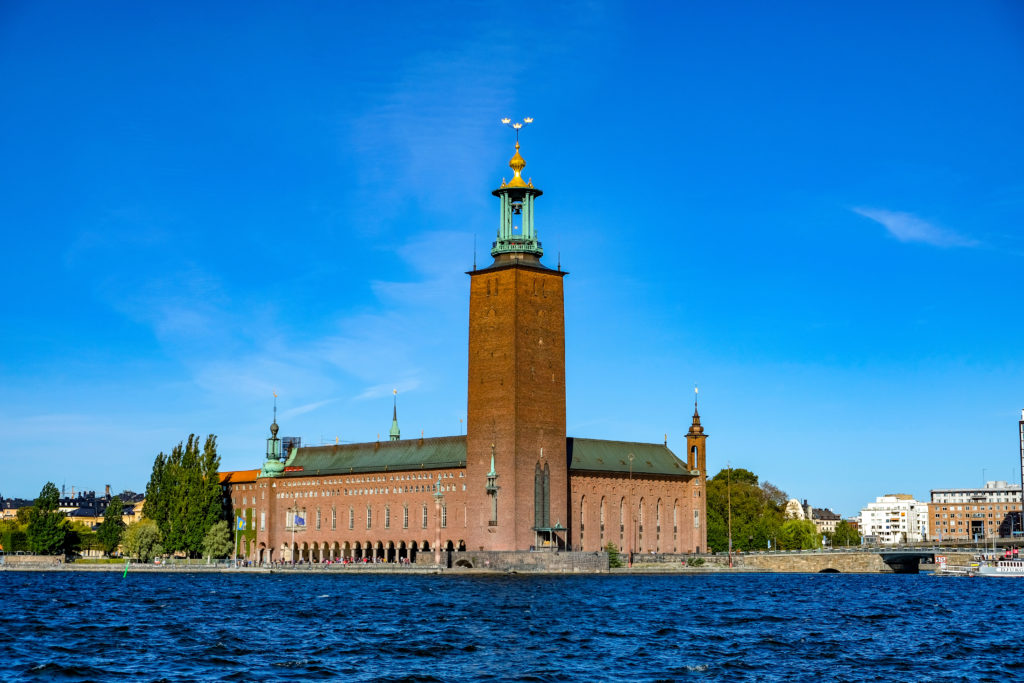
Tre Kronor topped Stadhuset building
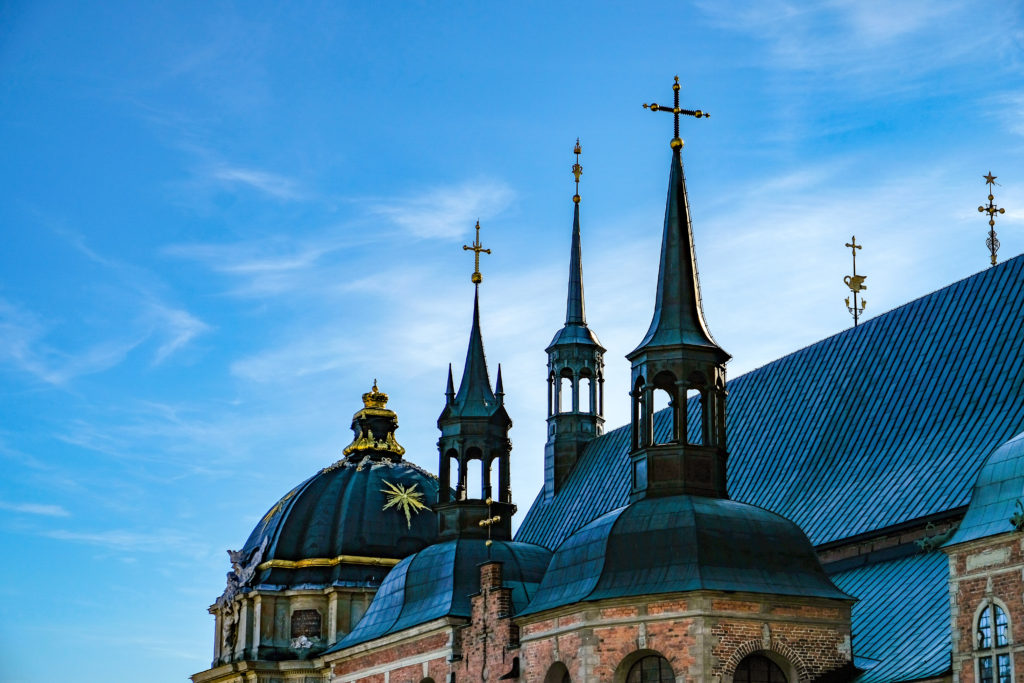
Roof of Riddarholmskyrkan
Sodermalm
For a change of scenery, we crossed over the bridge to the southern island of Sodermalm, which seemed to be a popular shopping and dining location for the locals. Getting across the bridge also afforded us great sunset views of Gamla Stan and the Stockholm skyline.
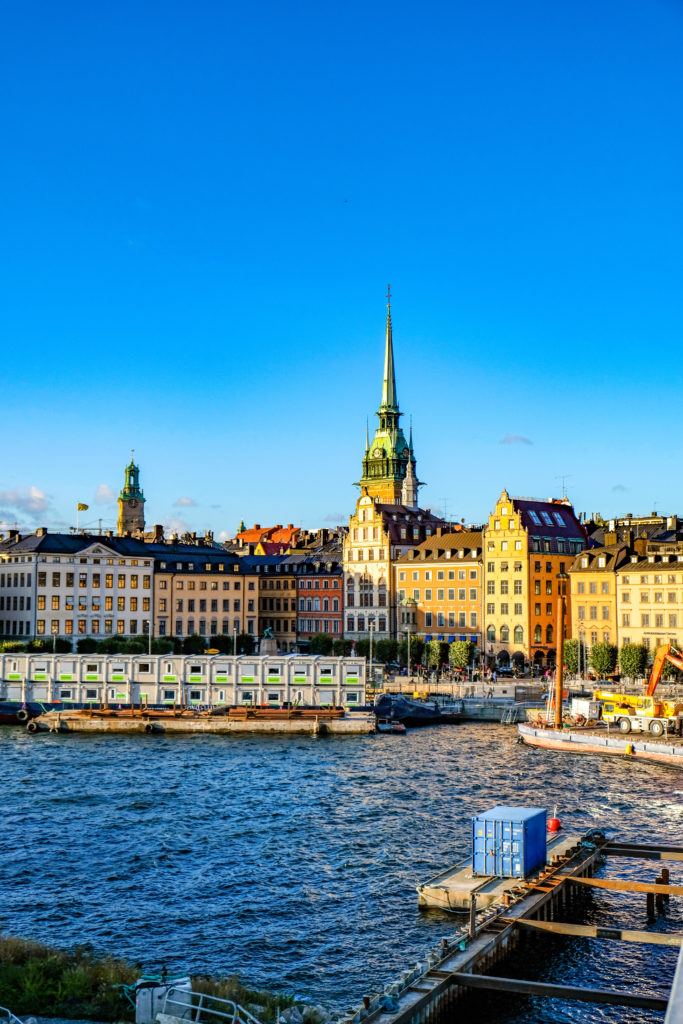
View of Gamla Stan from across the water
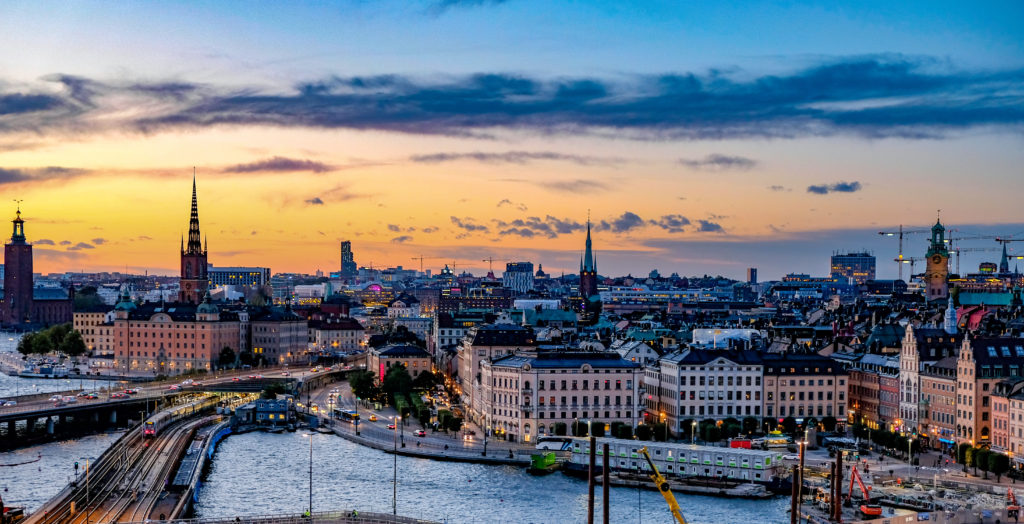
Stockholm skyline at dusk
Djurgarden
This island was once the royal hunting grounds, and now serves the city of Stockholm as a greenery filled city park. We took a short ferry ride across from Gamla Stan, then spent the better part of the afternoon strolling around the park and enjoying the relaxed surroundings. Djurgarden is a popular destination with locals as well, whom we saw jogging along the many paths, kayaking on the clear lake waters, or enjoying their picnic in the park. Baby A was loving being outdoors and soaking in all the greenery. She even laid her first eyes on some horses that were grazing in the park. At the end of our walk we also went up the nearby Kaknastornet communications tower for some 360 degree views of all of Stockholm.
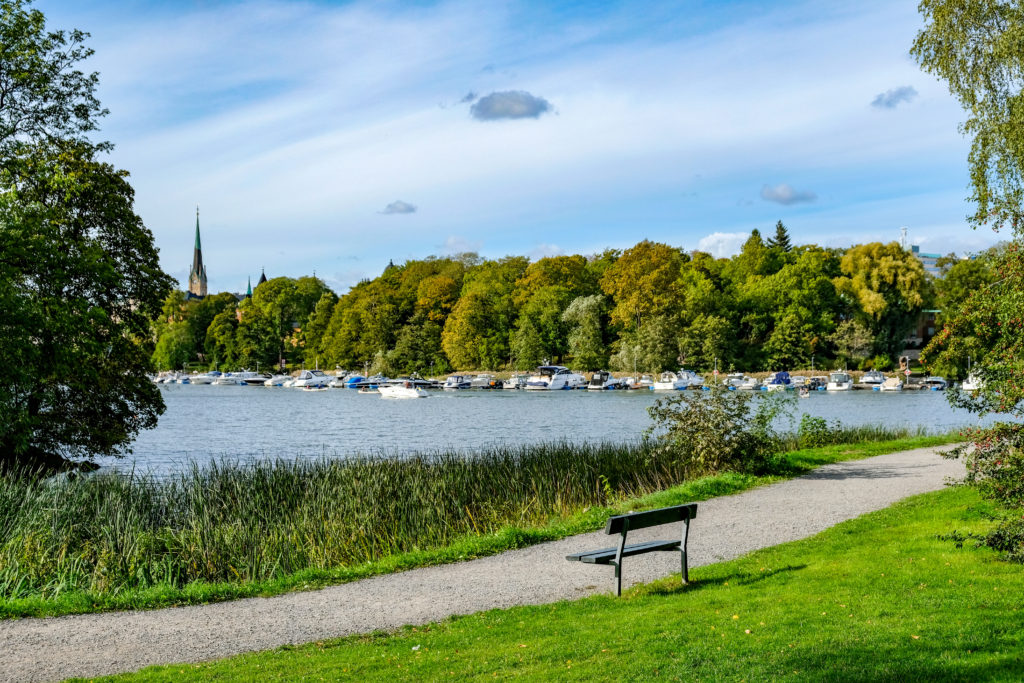
Greenery filled Djurgarden
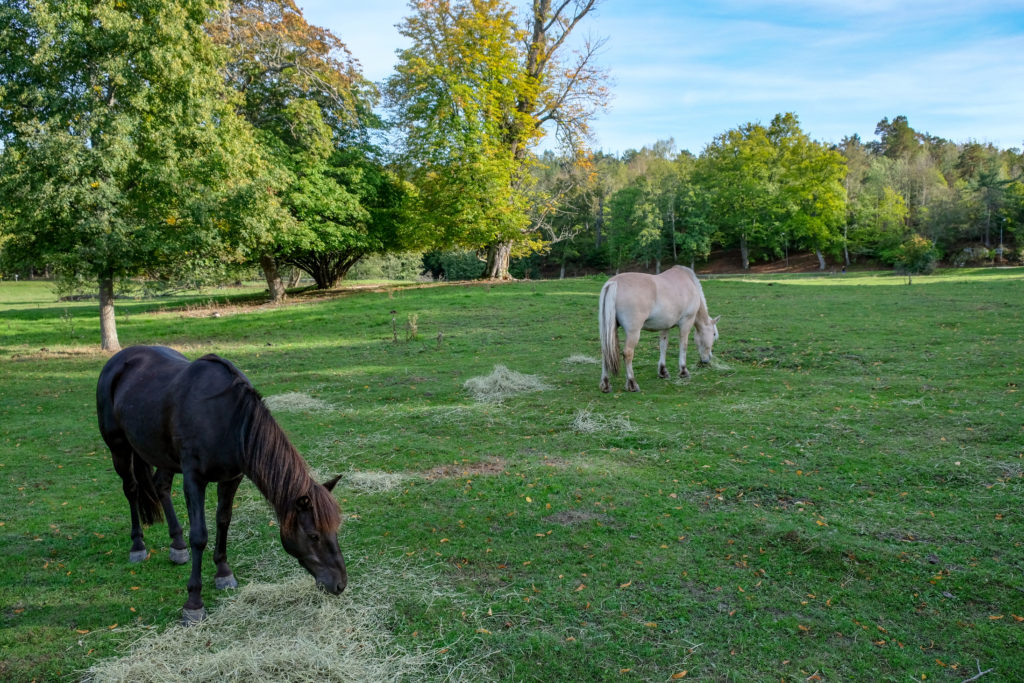
Horses grazing in the open air Skansen Museum
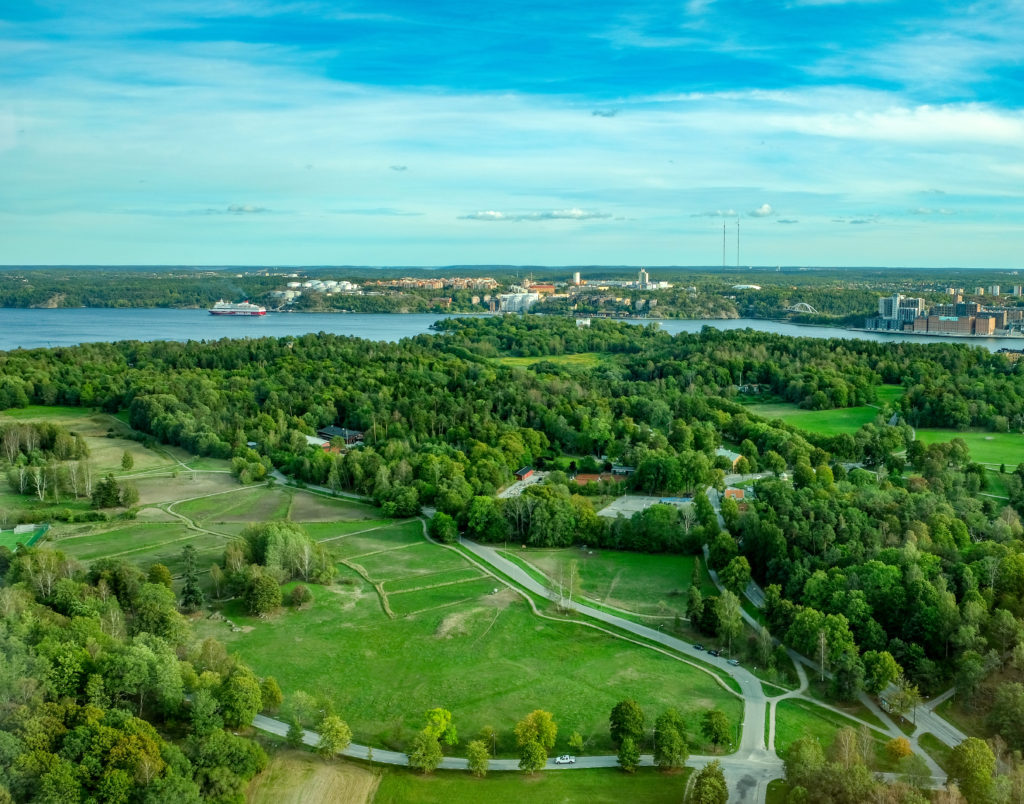
View of Djurgarden from up above the Kaknastortet tower
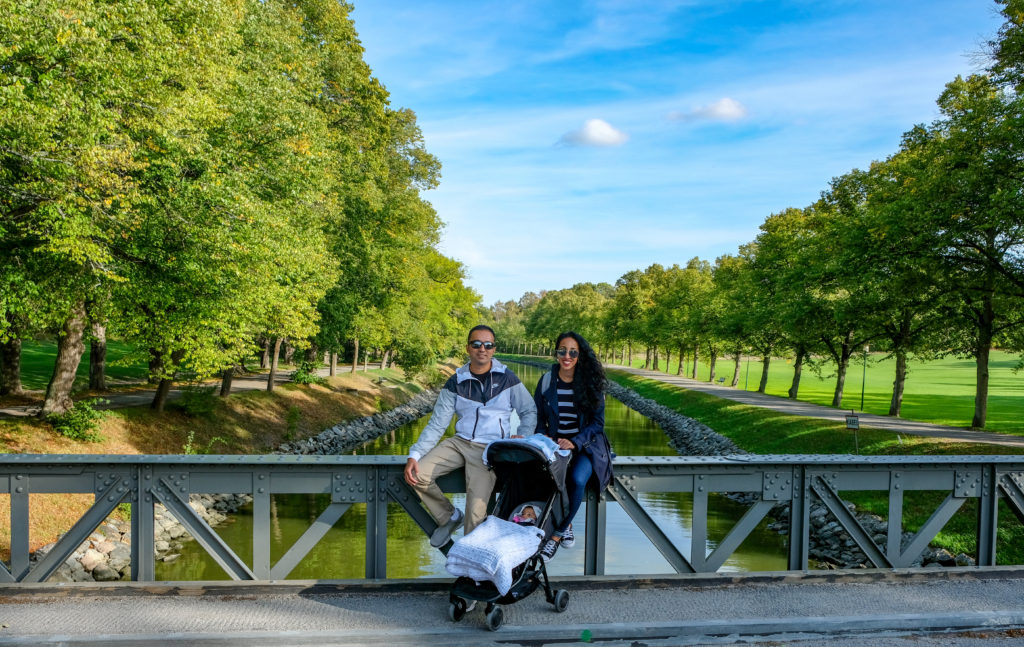
By one of the manmade canals running through Djurgarden
Vasamuseet
One of the main attractions on Djurgarden is the Vasamuseet (Vasa Museum). This unique one of a kind museum was literally built around a reclaimed 17th century ship. The Vasa was built to be one of the mightiest warships of its day, but unfortunately it sank as soon as it left harbor due to poor design which made it really top heavy. It sank in just a few minutes, barely 1300m after setting sail in full splendor from the harbor, killing 30 sailors onboard. The ship was raised in 1961 after 333 years and painstakingly reassembled as one of the worlds biggest jigsaw puzzles.
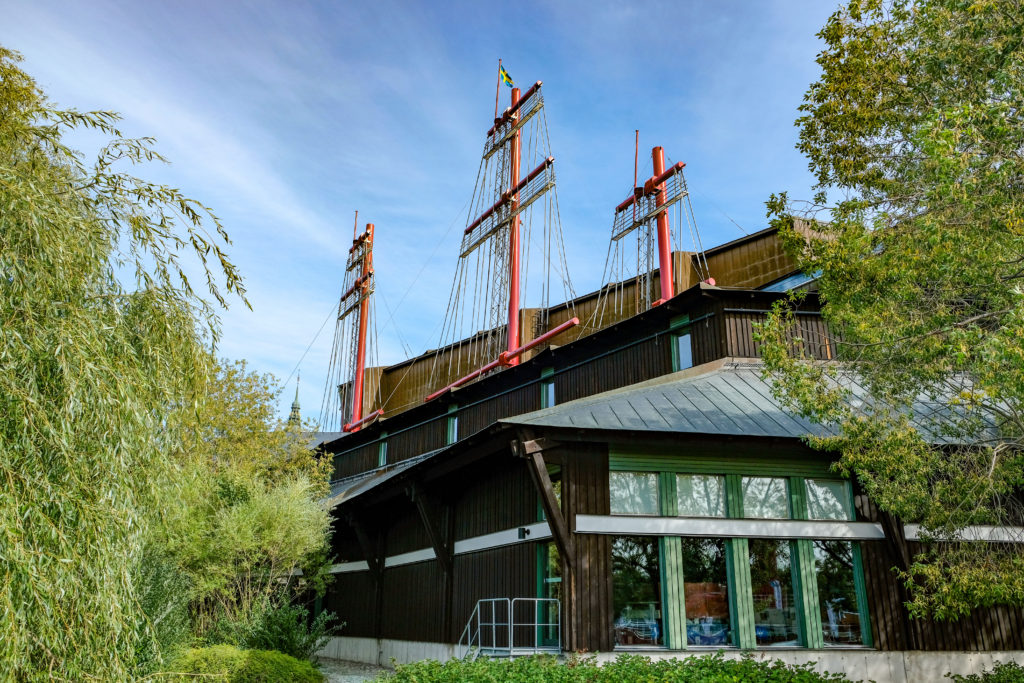
Roof of Vasamuseet
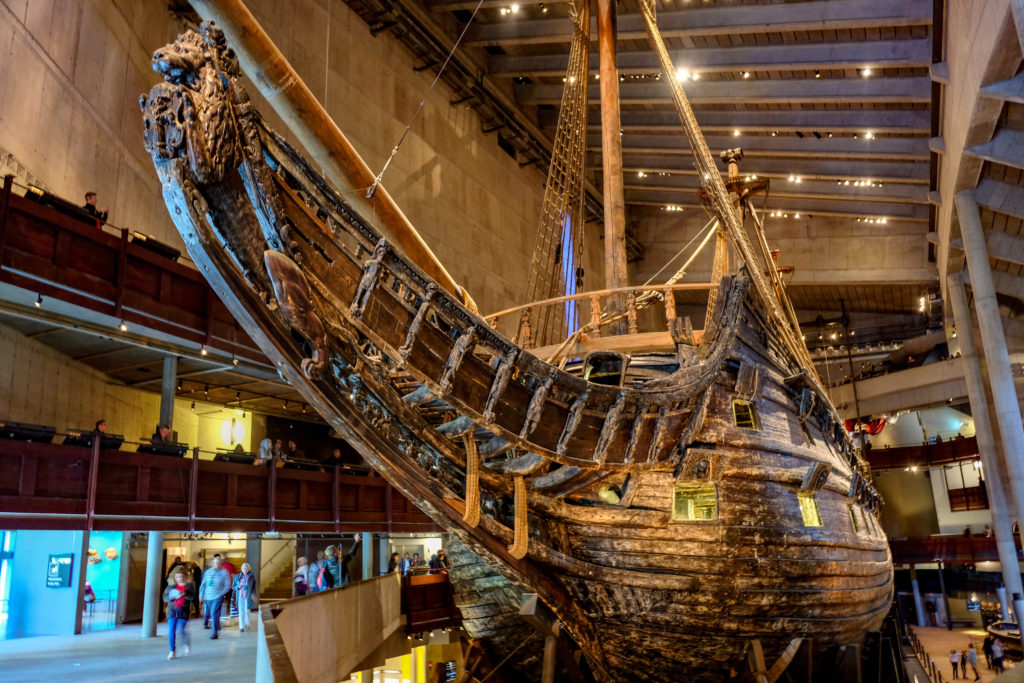
The reclaimed Vasa
Tunnelbana Art
For a city so pretty and famous for its great outdoor activities, it would seem ironic to go underground in search of art. That is precisely what we decided to do – to get a view into the 100s of kilometers of art that adorn the Stockholm Tunnelbana (subway) stations. These pieces of art which started getting commissioned in the 1950s range from the whimsical & colorful, to the broody and even politically or environmentally conscious statements.
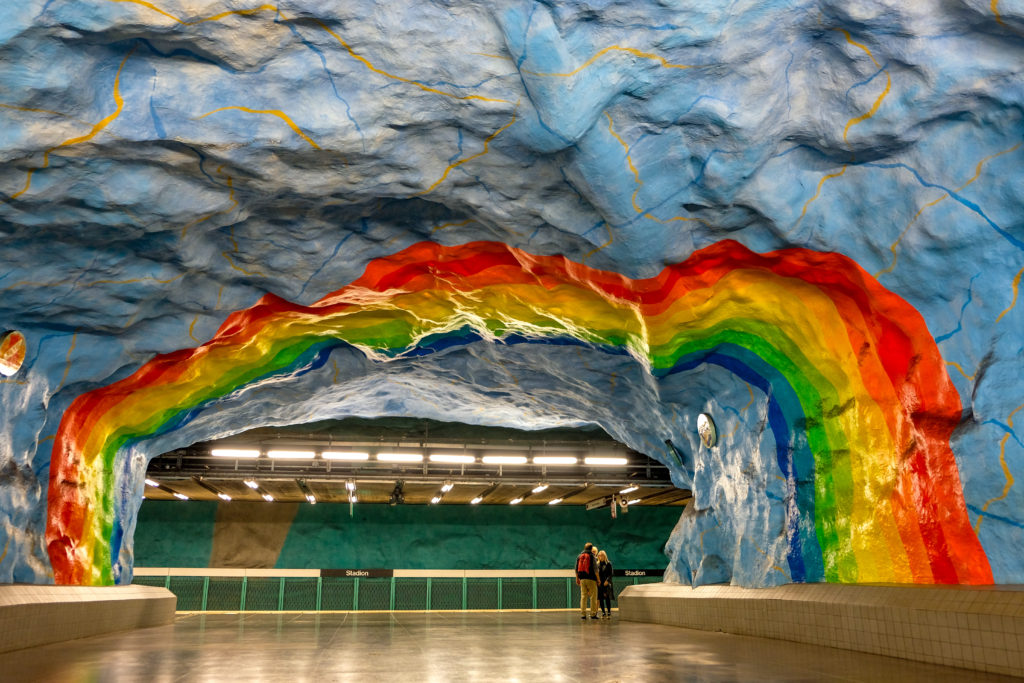
Stadion Station with its colorful rainbow and sky blues
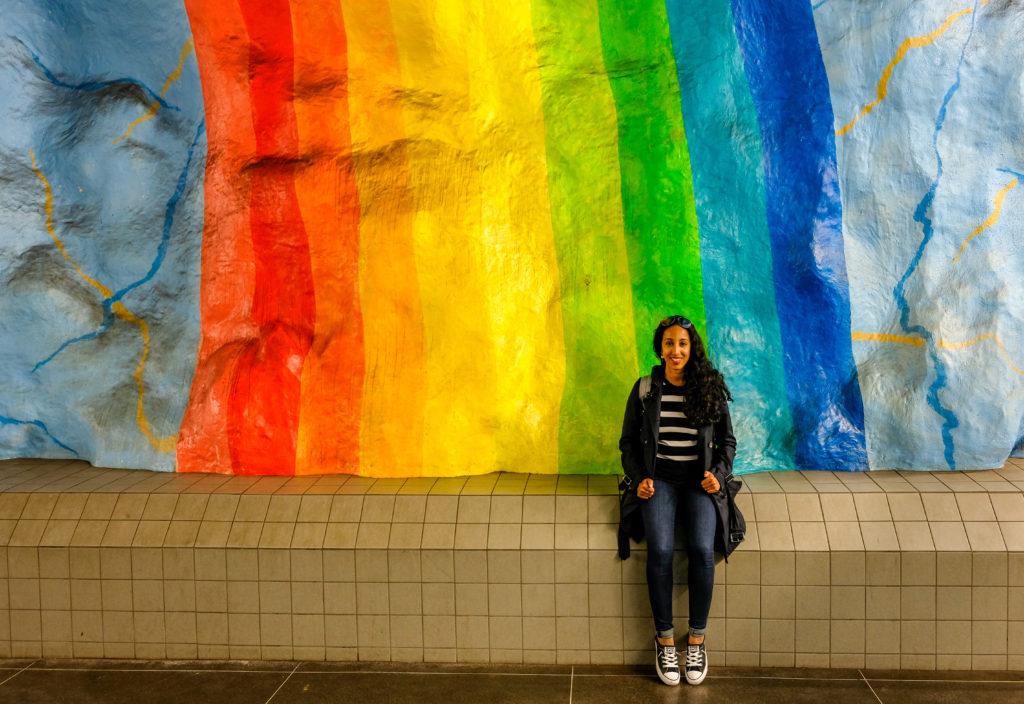
The rainbow shades of Stadion
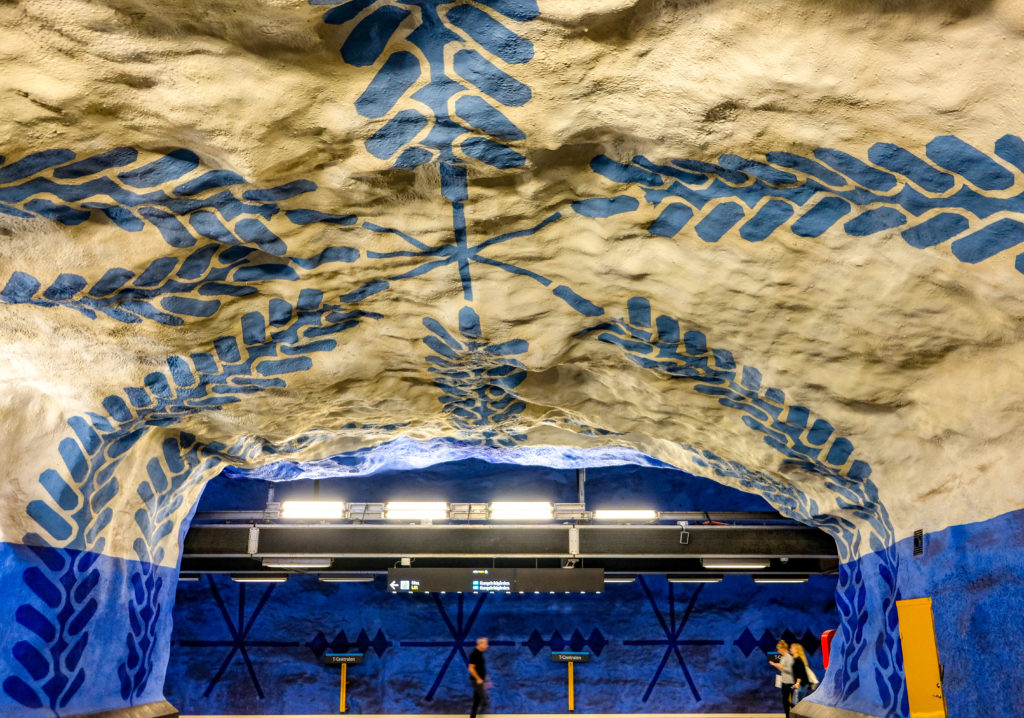
Floral prints of T-Centralen Station
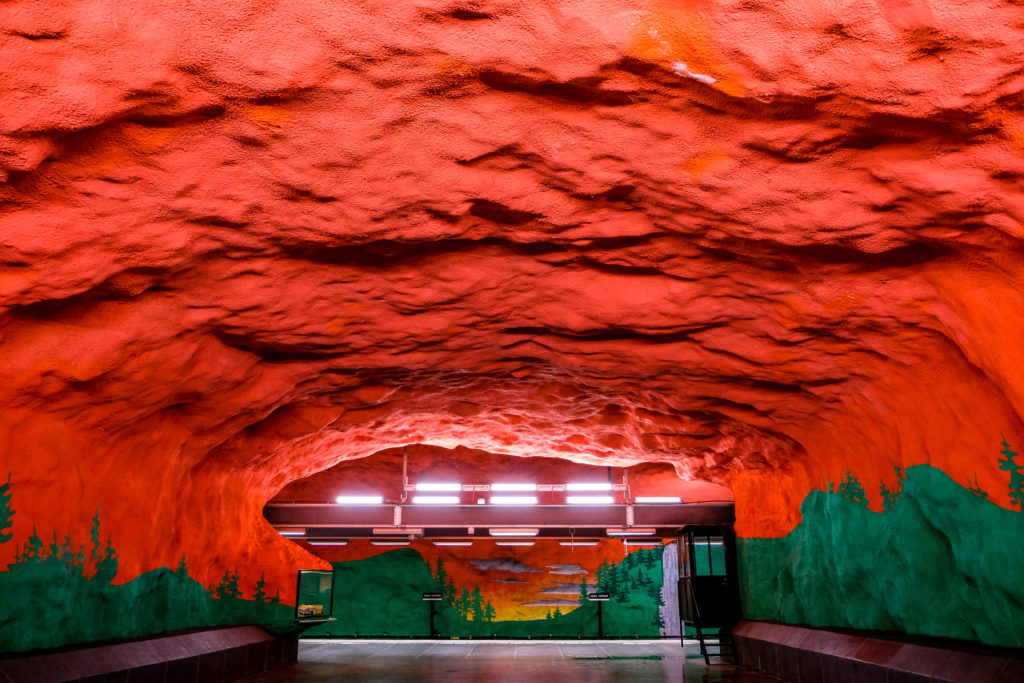
Solna Centrum Station or entryway to another portal?
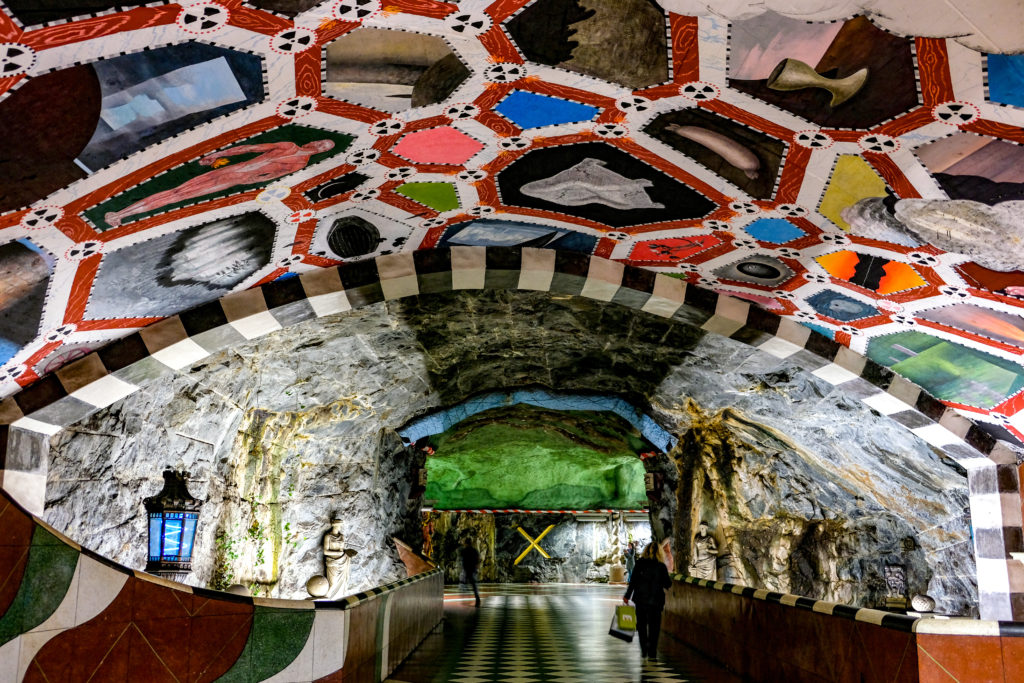
Multi colored Kungstradgarden Station
Norrmalm
A short walk to the north across another bridge is the area of Norrmalm, the main city center. Baby A’s stroller appreciated the smooth paved streets too, after the beating it was taking on the cobblestones of Old Town. We spent a leisurely afternoon in and around the Kungstradgarden city park, and window shopping in the shopping district around it. Of course, no visit to Stockholm would be complete for Shelly without doing some shopping damage at the H&M flagship store!
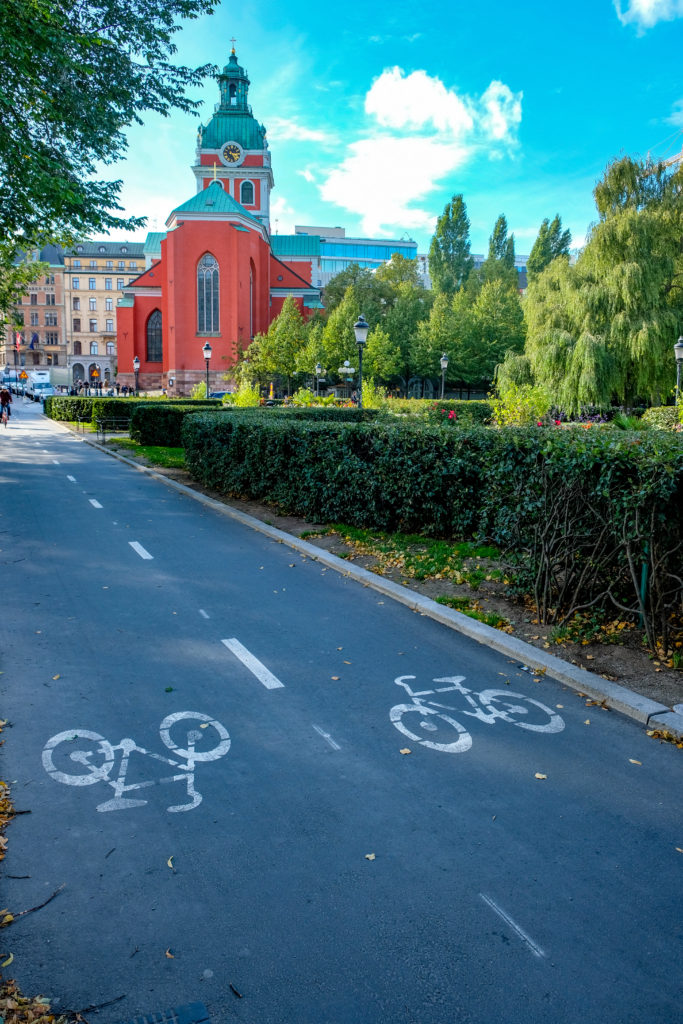
2-way bike lanes in the city
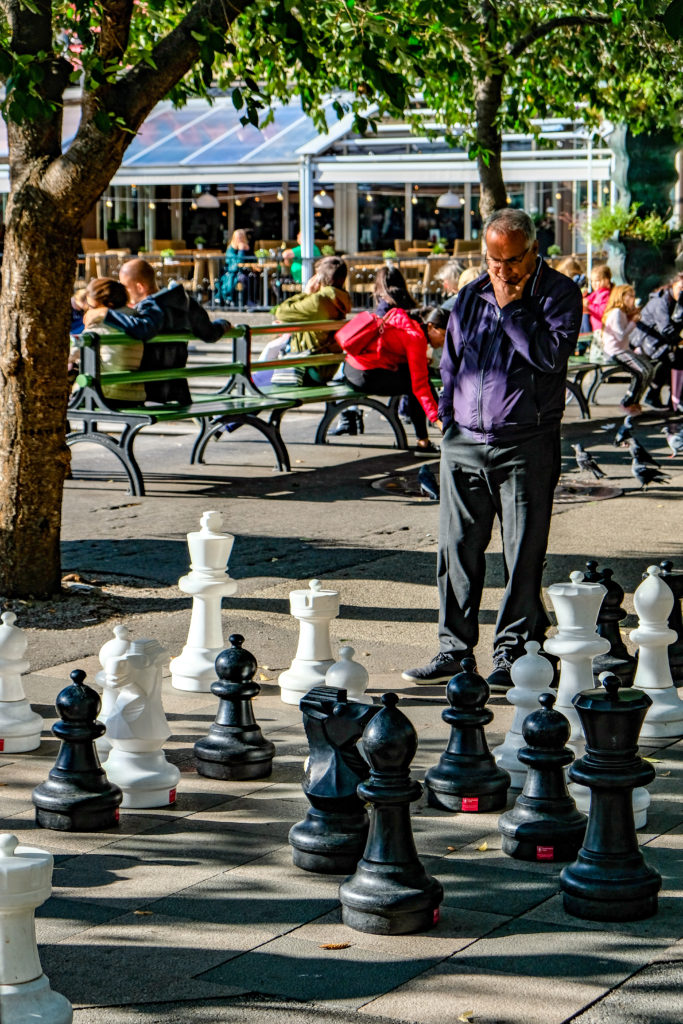
Swedish gentleman pondering his next move at an outdoor chess game
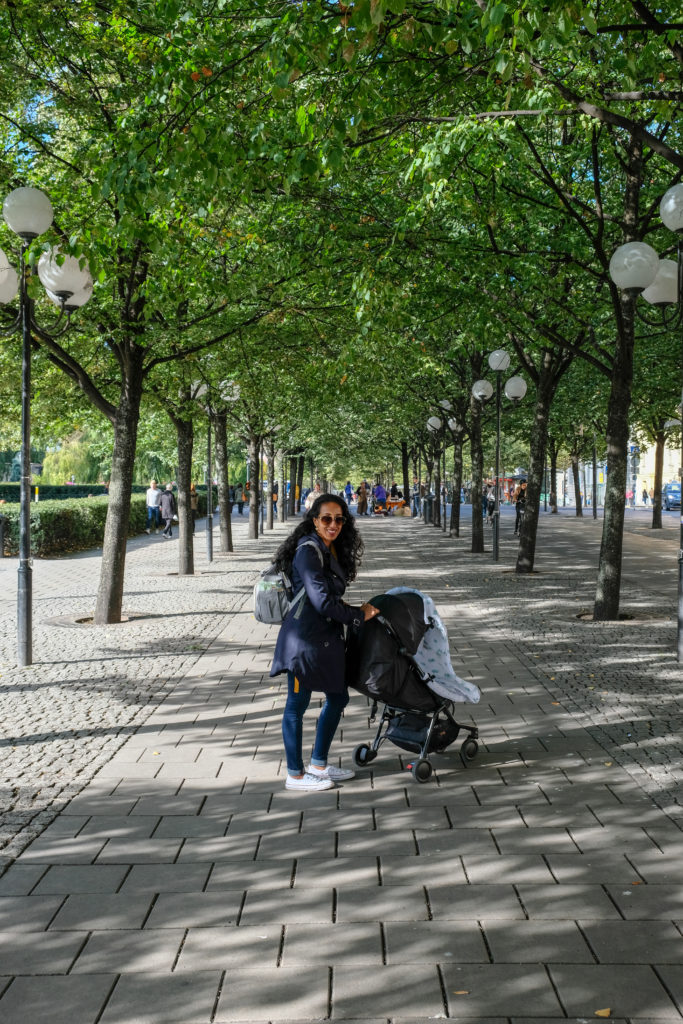
Strolling through the tree lined walkways in Norrmalm
Eats
We were pleasantly surprised to find a thriving food scene in Stockholm, that extended beyond just Swedish meatballs (or do they just call it meatballs here?). Here are a few of our favorite Swedish eats and restaurants from our 4 day Stockholm trip.
Chaikhana
Svartmangatan 23, 111 29 Stockholm, Sweden (https://www.chaikhana.se)
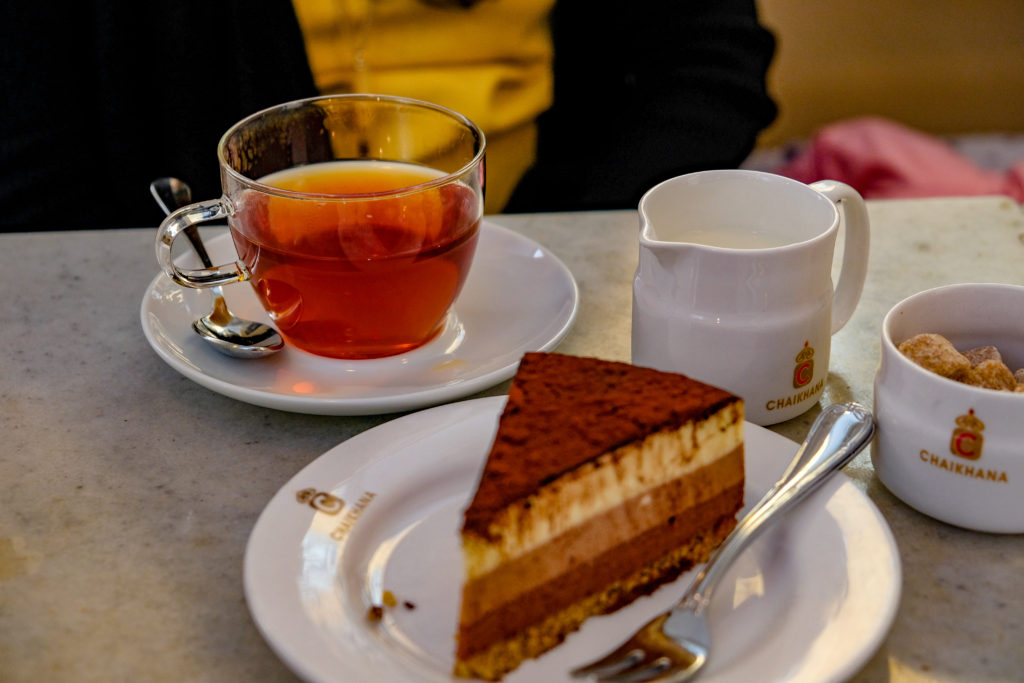
Partaking in the Swedish tradition of ‘Fika’ (afternoon coffee or tea with cake or dessert), at Chaikhana
Hairy Pig
Österlånggatan 9, 111 31 Stockholm, Sweden (http://thehairypig.com/deli/)
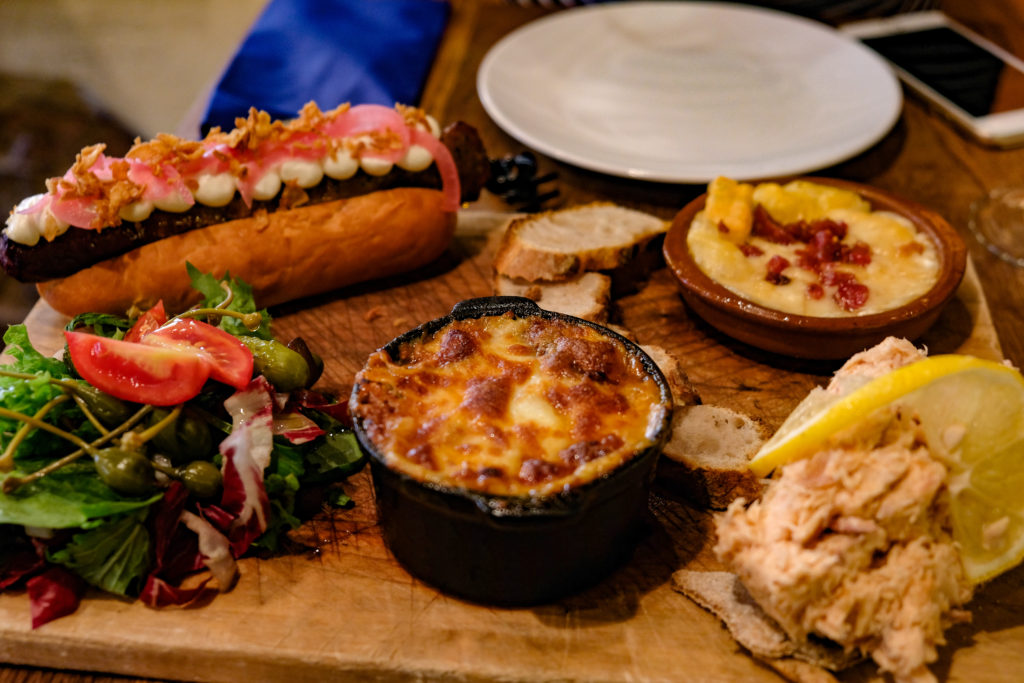
Lovely place tucked away in Gamla Stan with a smorgasbord of local delicacies
Chokladdkoppen
Stortorget 18, 111 29 Stockholm, Sweden (www.chokladkoppen.se/english)
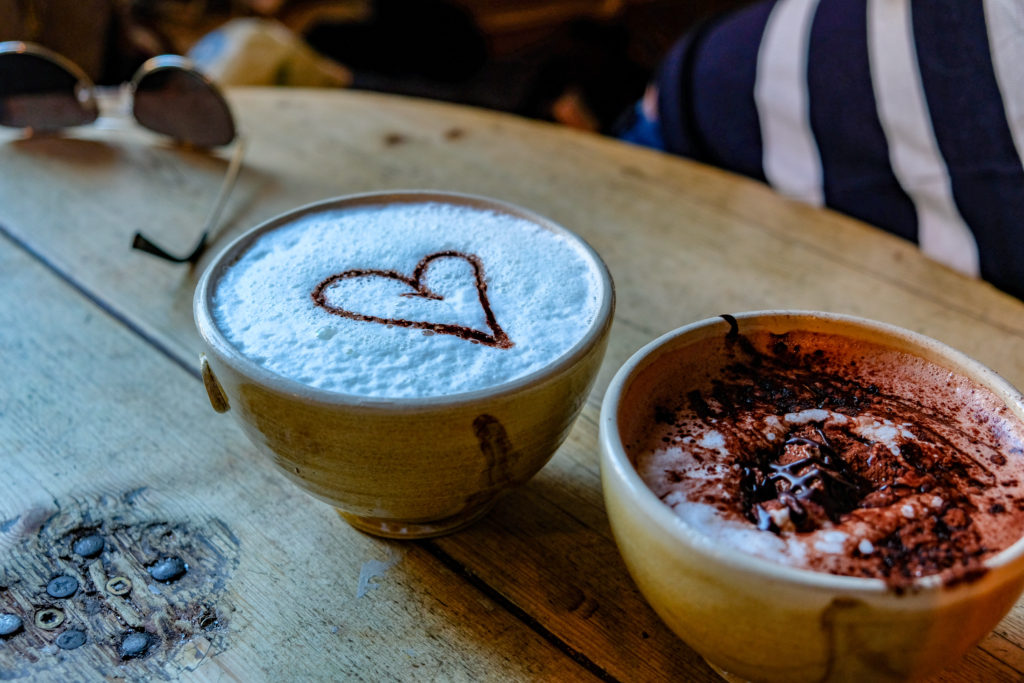
Huge bowls of hot chocolate
Tradition
Österlånggatan 1, 111 31 Stockholm, Sweden (www.restaurangtradition.se/en)
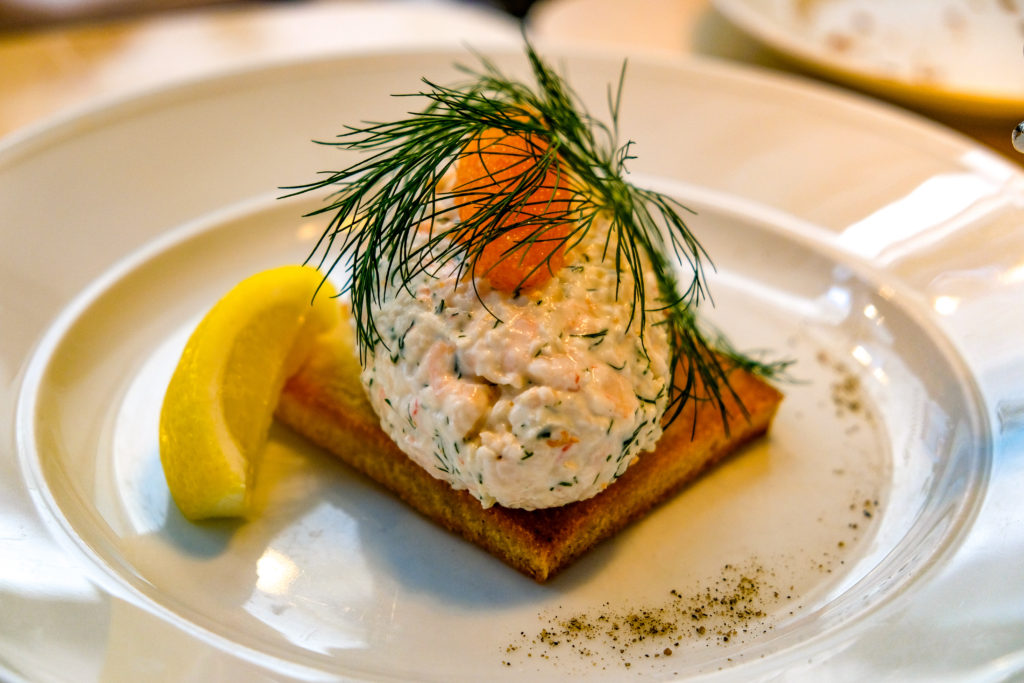
Typical Swedish food such as toast skagen (shrimp salad on toast) and pickled herring
Wärdshuset Ulla Winbladh AB
Rosendalsvägen 8, 115 21 Stockholm, Sweden (https://www.ullawinbladh.se/en)
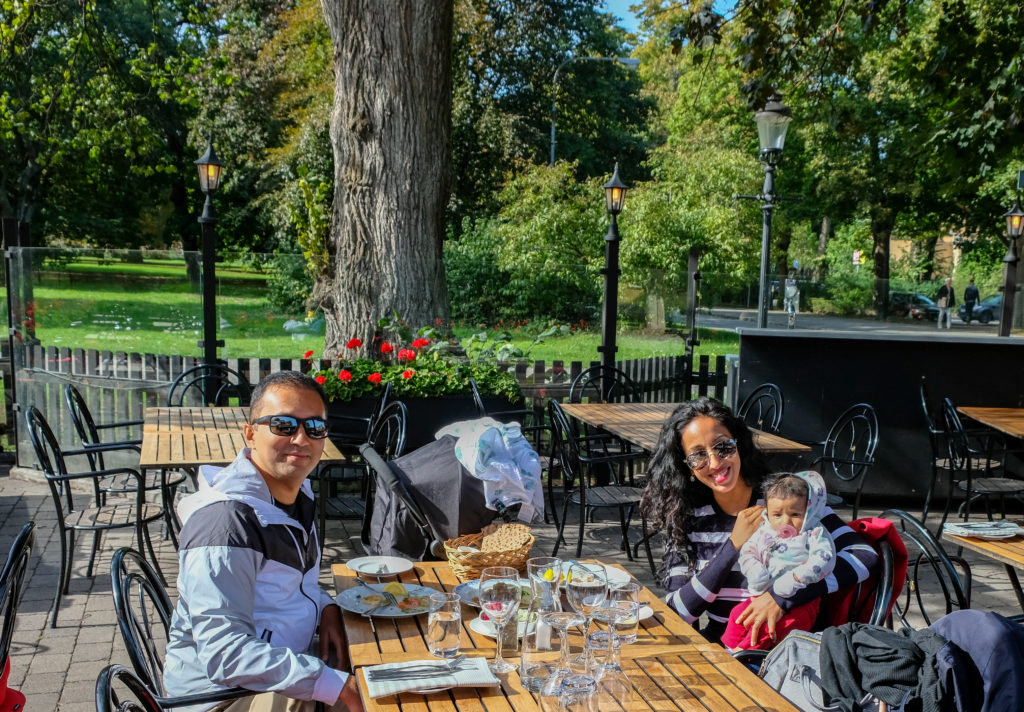
Enjoying a high quality lunch in the sunshine in picturesque outdoor setting of Djurgarden
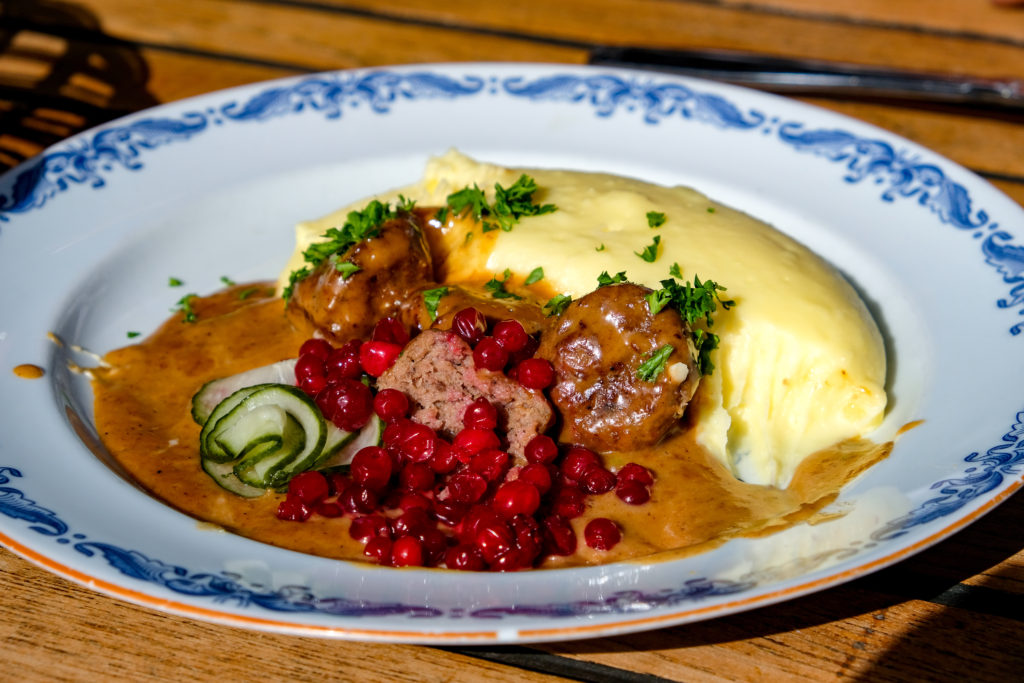
Swedish meatballs served with lingonberries and pickled cucumber
Osterlanggatan 17
Österlånggatan 17, 111 31 Stockholm, Sweden (www.osterlanggatan17.se/en)
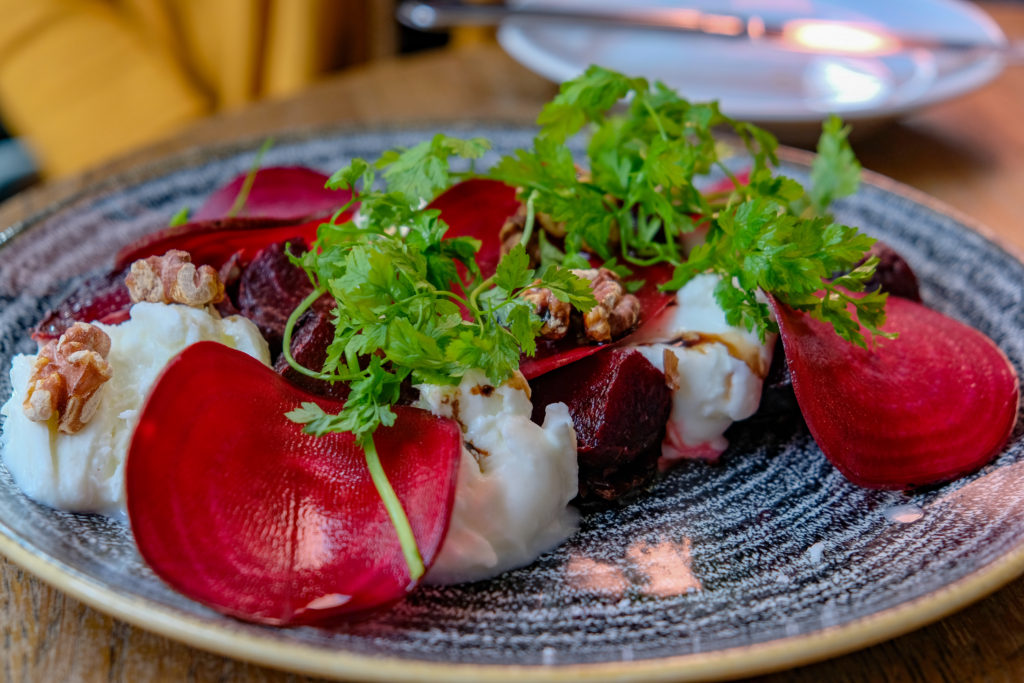
Chic bohemian place with fresh seasonal offerings
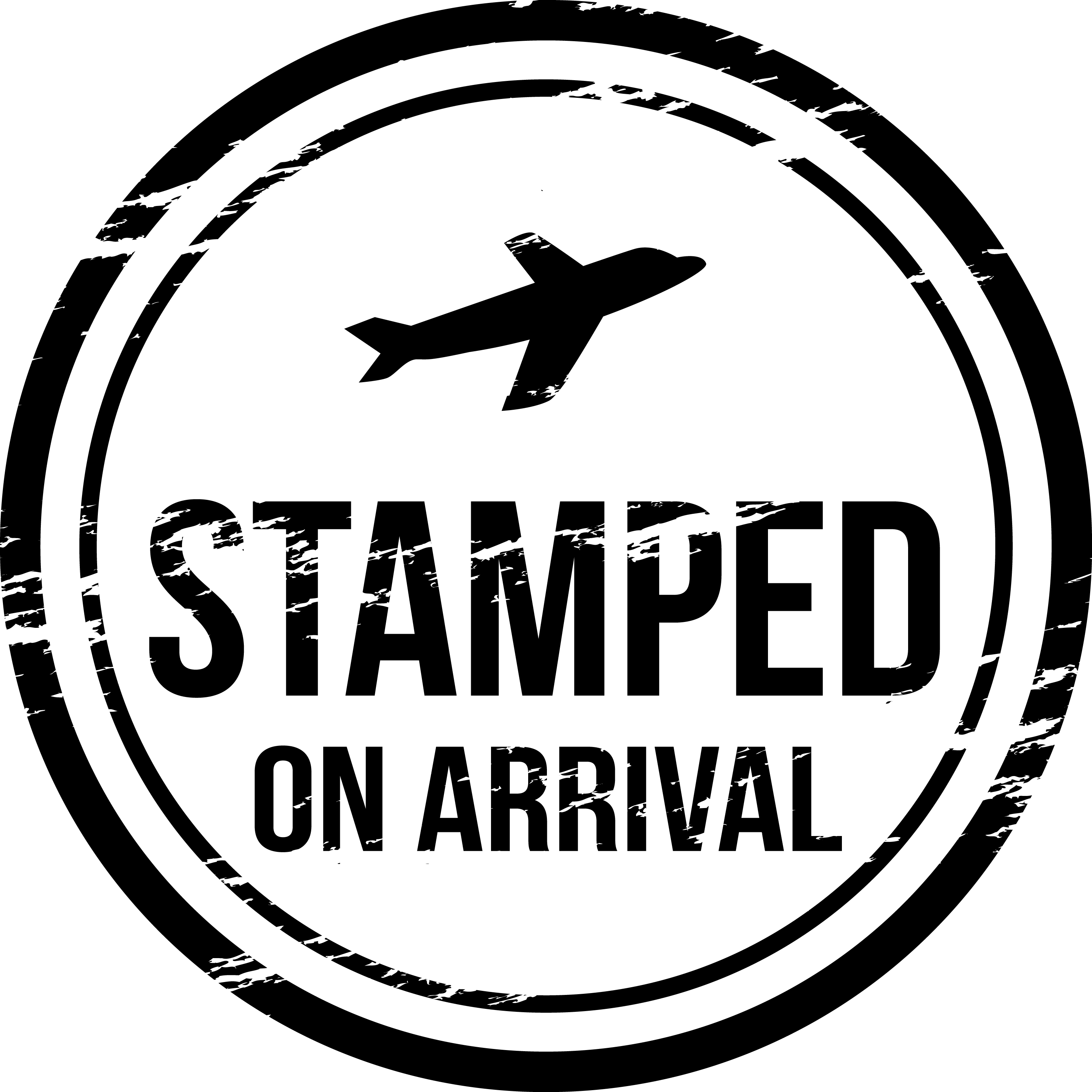
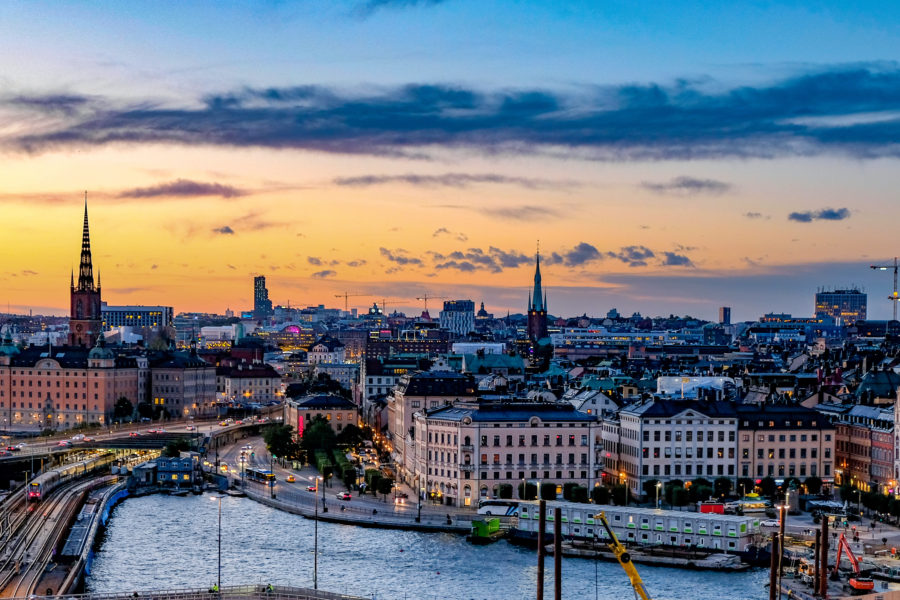
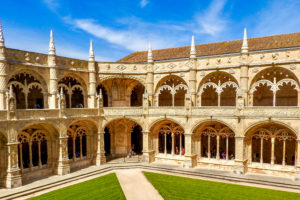
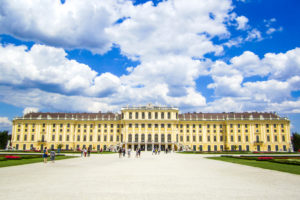
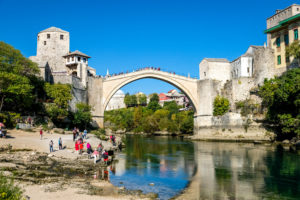




Leave a Reply
Please share your comments below!